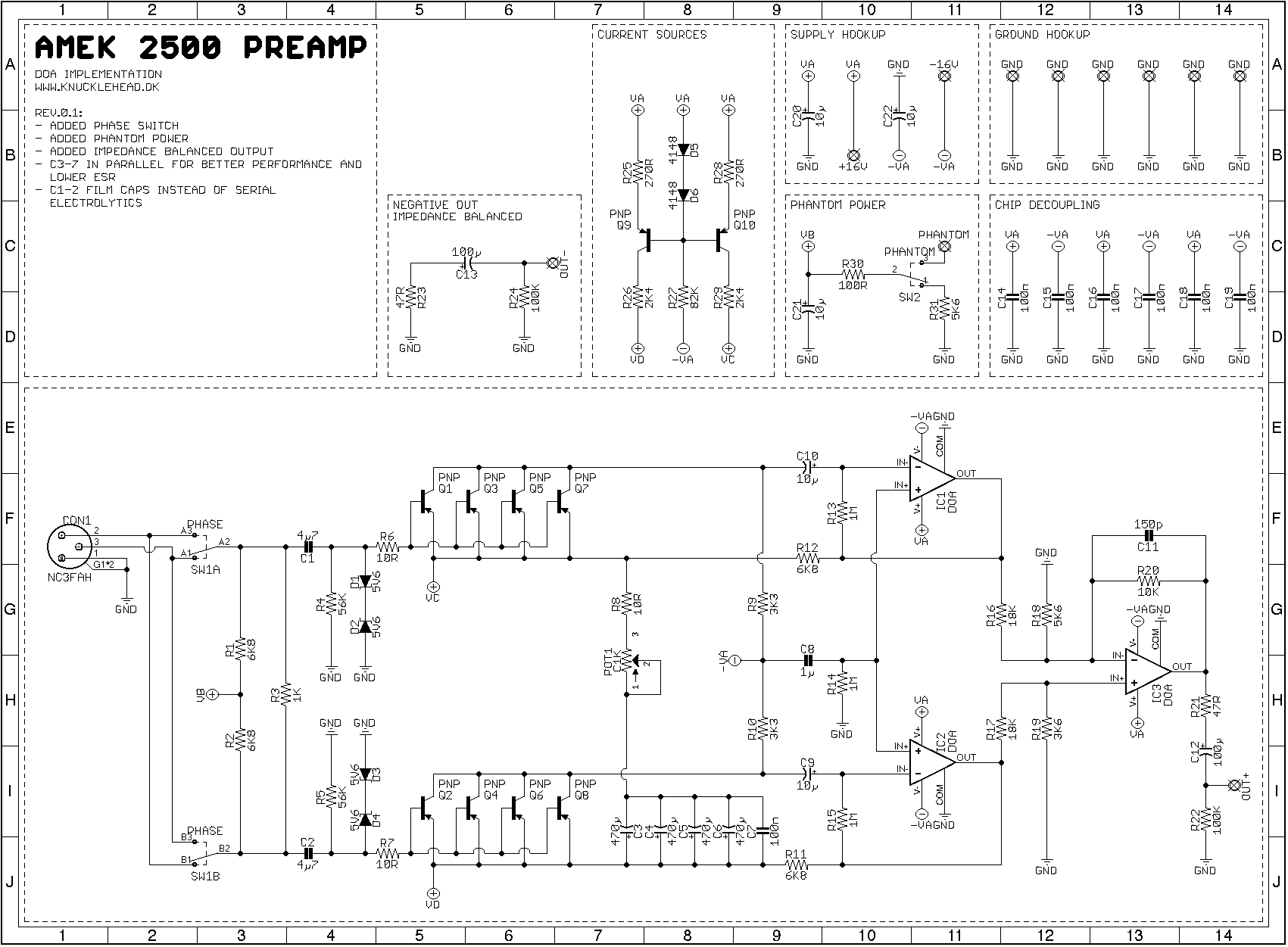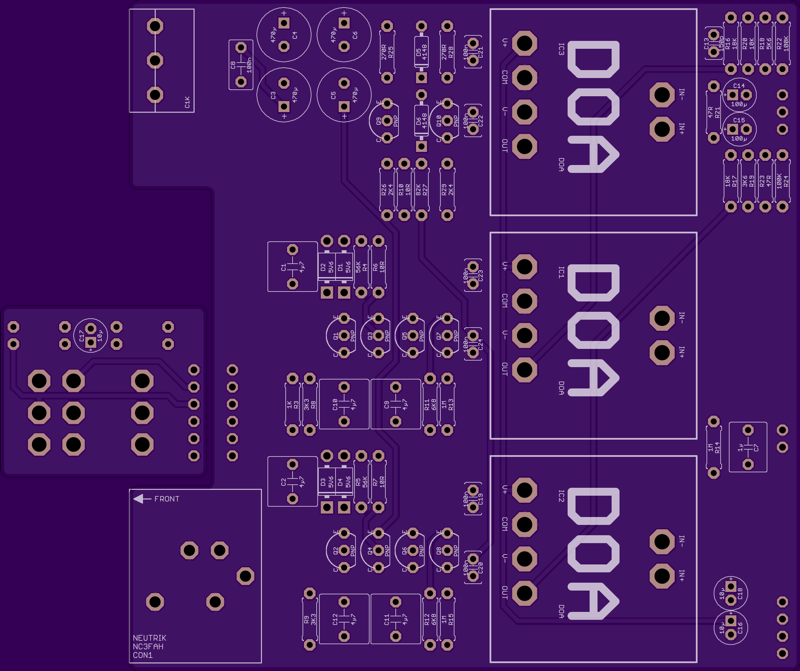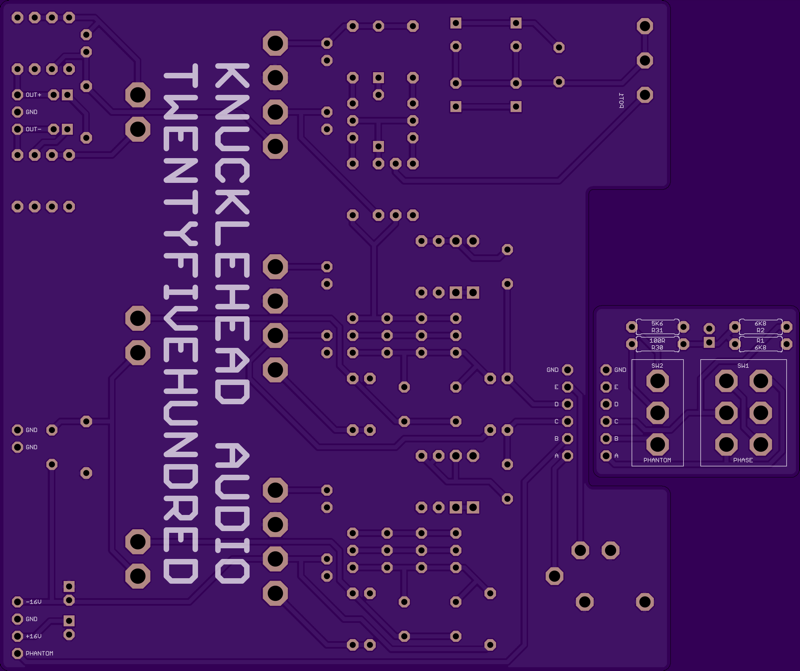Two questions though:
[list type=decimal]
[*]Someone mentioned that input caps are usually of much higher capacitance. How come? As far as i can see, the two 10µ in series with a 56K to GND forms a high pass filter with a corner frequency of 0.6hZ. Lowering the value of the input cap to 1µ raises the corner frequency to 2.8hZ - that still seems reasonable. A 470nF cap woud raise the corner frequency to 6hZ. Is there any reason why i should use a 10µF or higher value electro instead of smaller film caps?
[*]What's the function of the (ridiculously huge) 2200µF capacitor in the gain control? It takes up quite a bit of real estate Can i replace it with a more sensible value - say 220µF - without f**king anything up soundwise?
Can i replace it with a more sensible value - say 220µF - without f**king anything up soundwise?
[/list]
I should probably note that i mostly record rock/metal stuff, and rarely use low frequency content below 20hZ in the mix anyway, so recording content around 0.1hZ doesn't make much sense to me. 8)
[list type=decimal]
[*]Someone mentioned that input caps are usually of much higher capacitance. How come? As far as i can see, the two 10µ in series with a 56K to GND forms a high pass filter with a corner frequency of 0.6hZ. Lowering the value of the input cap to 1µ raises the corner frequency to 2.8hZ - that still seems reasonable. A 470nF cap woud raise the corner frequency to 6hZ. Is there any reason why i should use a 10µF or higher value electro instead of smaller film caps?
[*]What's the function of the (ridiculously huge) 2200µF capacitor in the gain control? It takes up quite a bit of real estate
[/list]
I should probably note that i mostly record rock/metal stuff, and rarely use low frequency content below 20hZ in the mix anyway, so recording content around 0.1hZ doesn't make much sense to me. 8)








